How to get started with hygge today (by a Dane)
Hygge is the cornerstone of Danish life and an essential part of my own everyday life with my family.
Hygge can give you a higher quality of life, make you more content, and even happier – and this hygge blog will help you get started.
If you’re interested in bringing some hygge into your home and life, then keep reading for everything you need to know.
Read more: 10 tips to create a hygge morning routine
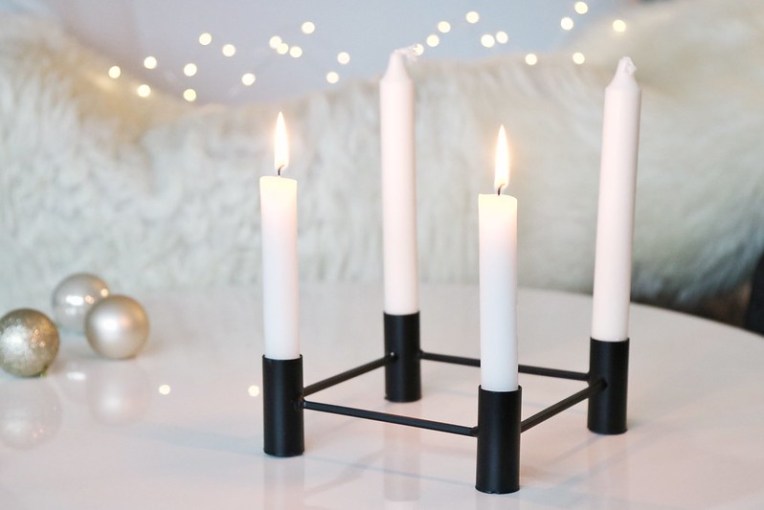
Table of Contents
What is hygge?
Hygge is about an atmosphere. It’s about being with the people we love. A feeling of home and that we are safe. It’s about the little things in life. Like warm socks. A dim-lit room. A hot cup of tea in your favorite mug.
I have a heating pillow. Some of my friends say it’s a little grandma-like. And maybe it is.
But I don’t care.
Because it’s hygge.
Hygge (pronounced “hooga”) isn’t the same for everyone. While for some, walking in the rain dressed in rain gear from head to toe has a high hygge factor (my mom loves this), for others it might be playing the latest computer game. All the different hygge scenarios usually have a few things in common: a safe environment, people you like, and tasty food or drinks.
Hygge is a way of life for Danes. It’s well-being. A feeling that requires a certain slowness, and the ability to enjoy the present.
Hygge is simple.
It’s snuggling up with a cup of tea and a blanket. It’s homemade cake from that little cafe on the corner with your friend. It’s decorating the house for Christmas while you listen to Michael Bubble’s Greatest X-Mas Hits. Or sharing a bottle of wine with your hubby.
Where does hygge come from?
Hygge is a Danish concept, but the original word is Norwegian and means well-being or happiness. For almost 500 years, Denmark and Norway were one kingdom, until Denmark lost Norway in 1814. Hygge first appeared in Danish writing in the early 1800s and we have embraced it ever since.
According to the European Social Survey, Danes are some of the happiest people in Europe. But we’re also the ones who meet most often with our friends and family and feel the calmest and most peaceful.
Hygge is an essential part of our culture; it’s in our DNA. As Meik Wiking from The Danish Happiness Institute says in “The Little Book of Hygge”:
“What freedom is to Americans, thoroughness to Germans, and the stiff upper lip to the British, hygge is to Danes.”
Hygge blog dictionary
In Denmark, hygge is used elastically as a noun, verb, and adjective. You can have a hygge-corner with hygge-lighting and enjoy some hygge-chat with your friend. We also describe things as hyggeligt (hygge-like).
For instance: What a hyggeligt house you have! Hyggeligt at møde dig (Nice to meet you). When you let your children play with their friends, you say: Hyg jer! (Make yourself cozy!).
These are some of the hygge-words we use, but there are lots more here: Learn the Danish hygge meaning
Fredagshygge
Fredagshygge is something we do on Fridays (fredag). It’s the last workday and what better way to celebrate than with hygge:
“Fredagshygge is snuggling up on the couch with popcorn, a warm blanket, and Game of Thrones.”
Familiehygge
Hygge you have with your family. Familiehygge is about spending time with your family (in Danish: familie). Playing games, cooking together, watching TV or going to the park.
“We had familiehygge this weekend. We baked cookies and listened to music.”
The high season of hygge – Christmas
We do hygge all year round, but the high season of hygge is Christmas. Danish winters are dark and long, and so the Danes get through this with hygge and lots of candles.
Go to Tivoli Gardens or walk the streets of Copenhagen or Aarhus during December and you’ll see the many Christmas lights.
Households in cities and villages put up outdoor lights, not just to decorate their house, but to spread the light and hygge in the neighborhood. Christmas is the perfect time to visit Denmark to experience some real hygge.
Read next: 24 Danish ways to create Christmas hygge
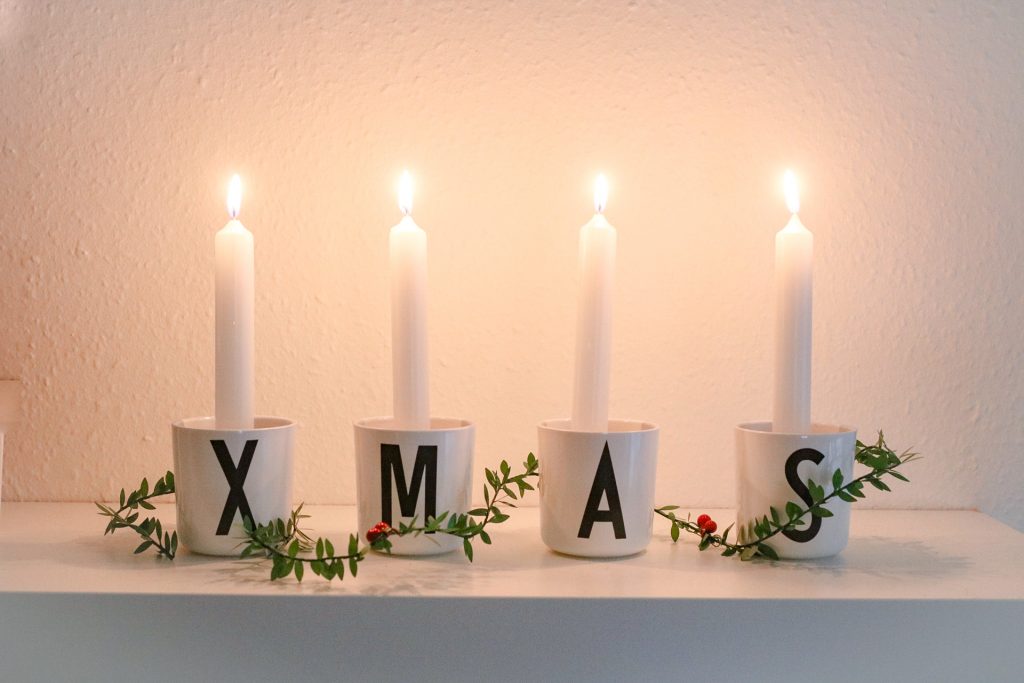
What are the benefits of hygge
It makes you happy
You can hygge on your own. But most of the time, you’ll want to share it with someone you care about.
When I prepared for Theo’s birth, the midwife told Thomas to hold me and strike my hair because touch releases the hormone oxytocin, which makes us feel happy and reduces stress, fear, and pain.
Now, don’t get me wrong. There’s nothing hyggeligt about giving birth! But the hygge and hyggelige activities also release this hormone. Comfort food, candles, blankets, and closeness are part of hygge.
And it all makes you happy, calm, and safe.
Quality of life
Hygge is not limited to the home. You can also hygge outside and at work. I’ve decorated my desk with a plant. I also have a box of Chai latte and some sweets in my desk drawer. On my chair is a warm knit for cold days. It makes my desk space hyggeligt and personal.
At my work, there’s always cake – there’s always a birthday, anniversary, a sale, or something else to celebrate. Maybe just the fact that it’s Friday.
At Theo’s Kindergarten, they prioritize hygge with the kids every day. In December, they gather leaves and branches from nature and make their own Christmas decorations that the kids bring home. They also baked Christmas cookies the other day.
It brightens our days. All of this improves our quality of life.
Quality time with loved ones
Hygge is a great way to spend time with the people we care about. It creates an atmosphere that’s warm, relaxed, friendly, close, and welcoming.
Read next: 10 great ways to hygge as a family
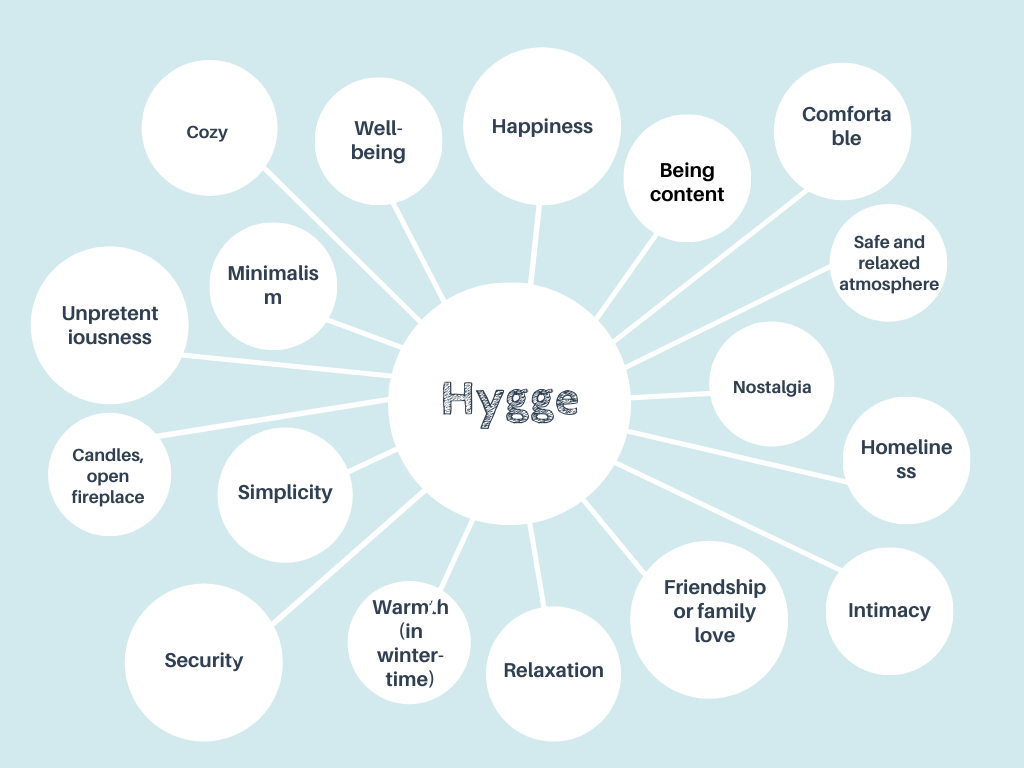
What is the opposite of hygge?
Until a few years ago, hygge was unknown to anyone outside of Scandinavia.
Now, it’s become somewhat of a trend in books, newspaper features, and endless department-store winter displays (see The Guardian‘s “The Hygge Conspiracy“).
And it’s barely recognizable to Danes.
Hygge has never been something you could buy. It’s not a lifestyle or something you can force or cash in on.
Being posh and buying stuff from the right place
Hygge is about comfort and feeling safe. Being together. It’s never about being posh, about cakes from the ‘right’ place.
It’s a cake you baked yourself. Hygge is a feeling. It’s something that has meaning in itself, it’s not a means to becoming a better person, like doing exercise.
Intellectualism is not hygge
Heavy debates on politics and philosophy – that’s not very hyggeligt. So, to have a hyggelig time, shy away from those topics.
Staring at your phone all day
This is probably the least hygge thing out there. Watching TV is okay – especially if you invite friends over to watch it with you (hello, Nordic Noir!).
Only one slice of cake
Hygge encourages you to let loose and say yes to that extra slice of cake. Live a little.
Purchasing products just to be on-trend
At the core, hygge is about an atmosphere, not things. So, buying expensive stuff or candles that say “hygge light” is not hygge. Even the ugliest candle can be hygge. In fact, they often are.
Getting started with hygge
So, now that we know what hygge is and isn’t, let’s get into some easy examples of how to hygge:
Be present
Hygge is very much about being present and enjoying the little things. So, try to leave your personal problems behind and be positive.
There are plenty of other times to worry about our lives. Happiness comes from setting those times aside and being in the now with the ones we love.
Help each other out
Because we see hygge as a way of life, we all work together to make it hyggeligt.
It’s a team effort. It includes things like help taking out the dishes, and the older kids playing with the younger kids. To help each other out so it’s not just one person doing all the work.
Light
Lights are an important part of creating a hyggelig atmosphere. But not just candles. We have lots of small lamps around our living room. And as a sustainable alternative to candles, we have small LED candles.
What could be cozier than curling up on the couch for a warm night in? Bonus points if your home is decorated for winter.
Throw blankets
Whether a chunky knit or blanket, having something soft to wrap around yourself is a must.
As are oversized sweaters and thick socks, which also make things super hygge. For instance, we have a word for sweatpants – hyggebukser, which is a pair of pants you’d never be caught dead wearing in public, but practically live in when you’re at home.
Films and books
A good movie or book can increase the hygge factor, too. Sit on the couch, put down your phone, turn off social media, and turn on some Nordic Noir like Borgen, The Bridge, or The Killing (the original, not the English version).
Family and friends
You can enjoy a hyggestund (hygge time) on your own, but it’s even better when you share it with your loved ones. Meet with the people you feel most comfortable around.
Homemade cake, comfort food, and hot drinks
Hygge is about being kind to yourself. Treating yourself. And the best kind is homemade comfort food, like a hearty stew or Danish meatballs. Cake, sweets, and pastry are also essential to a hyggelig time.
Fruits, too. But not vegetables. They’re not very hyggelige – unless you serve them with a dip or some haydari. That could work.
It’s about comfort and not about spending tons of money on an expensive meal. So, pour yourself a warm drink, dig up your grandma’s chicken pot pie recipe, or spend a weekend afternoon baking your favorite chocolate cake.
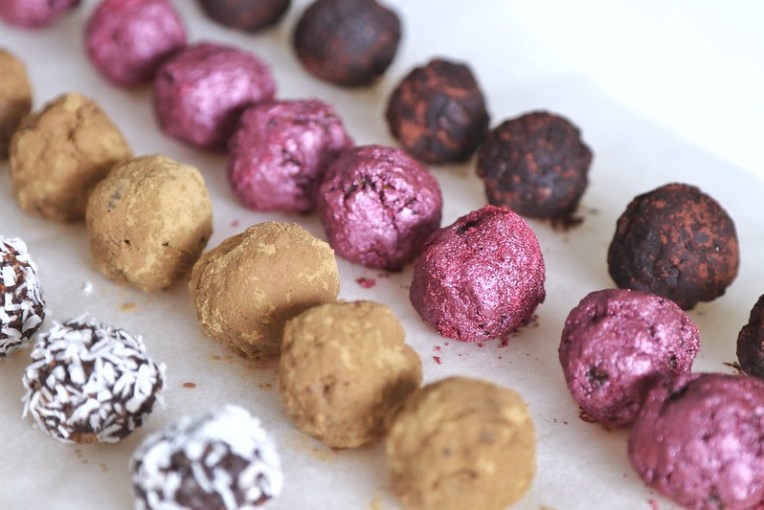
Do you have questions about my hygge blog? Ask away in the comments!
FAQ – Hygge lifestyle blog
What are the ten rules of hygge?
Meik Wiking, in his book “The Little Book of Hygge: The Danish Way to Live Well,” lays out ten key Hygge principles:
- Atmosphere
- Presence
- Pleasure
- Equality
- Gratitude
- Harmony
- Comfort
- Truce
- Togetherness
- Shelter
These principles are a big deal in Denmark, often cited as the world’s happiest country.
What is the English equivalent of hygge?
Coziness.
Hygge is all about feeling snug, content, and at ease. It’s a kind of coziness that brings a real sense of comfort and satisfaction. You can also use it as an adjective, like describing something as “hygge,” which means it’s cozy or comfy.
Why is hygge so popular?
Hygge is popular because it’s about finding comfort and happiness in simple things. It’s a break from our busy lives, focusing on relaxation and enjoying time with friends and family.
People like it because it encourages appreciating the small moments and creating a cozy, peaceful environment. It’s a straightforward, down-to-earth approach to finding contentment.
What is the Denmark philosophy of hygge?
The Danish philosophy of hygge is all about creating a warm atmosphere and enjoying the good things in life with good people.
It’s a concept that embodies comfort, togetherness, and well-being. In Denmark, hygge often involves creating a cozy environment, like lighting candles, having soft blankets, and enjoying a warm drink.
It’s not just about the physical surroundings, though; it’s also about a mindset of appreciating the present moment, finding joy in simplicity, and nurturing a sense of community and comfort with others.
It’s a way of living that emphasizes warmth, simplicity, and contentment.
More posts about happiness you might like
- 20 hygge quotes that will inspire you to live a happier life
- 15 spiritual morning rituals to create a balanced life
- How to get started with hygge today
- How to live a simple life and be happy
Save it!


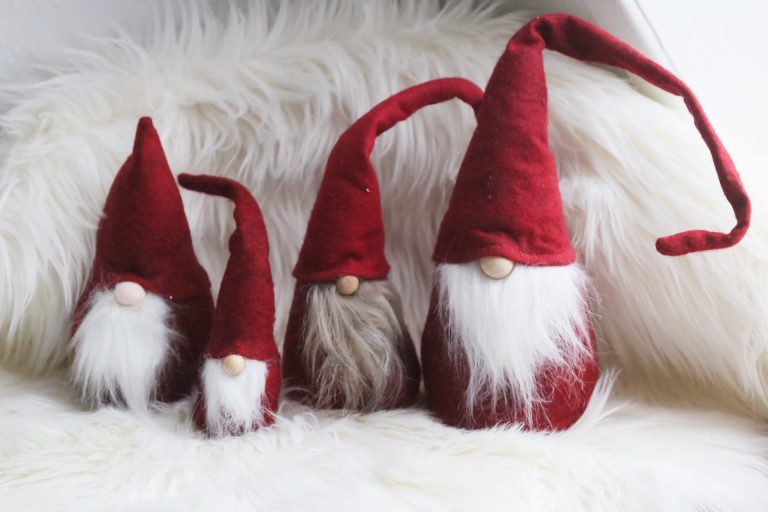

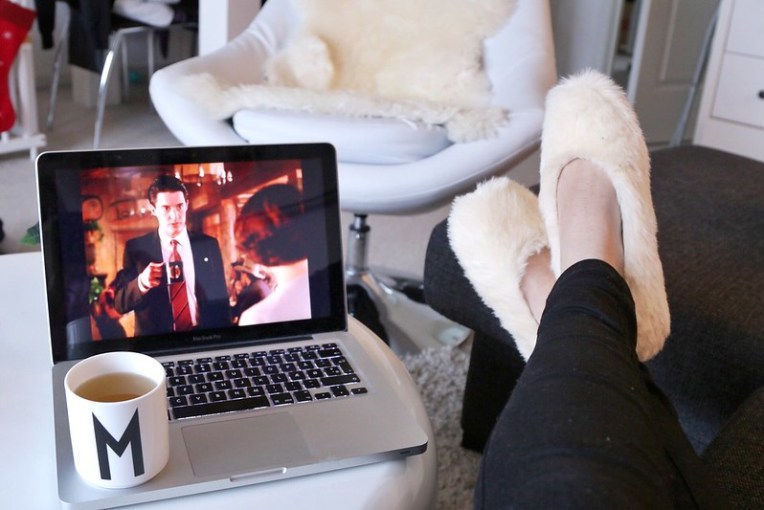
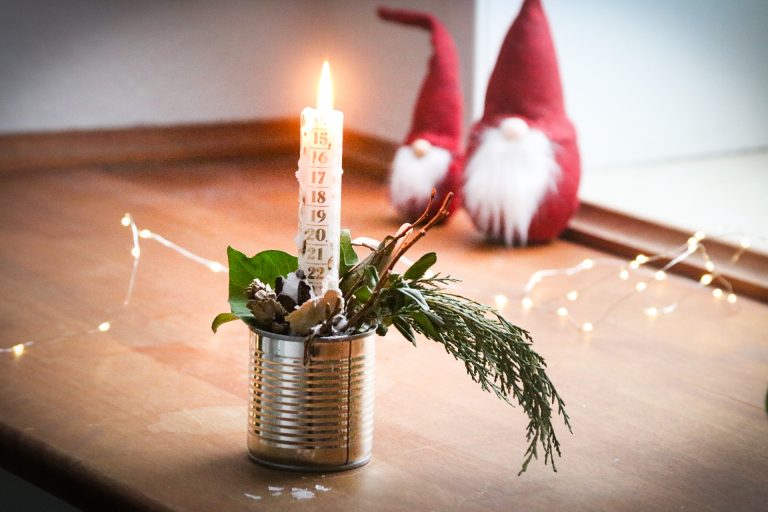
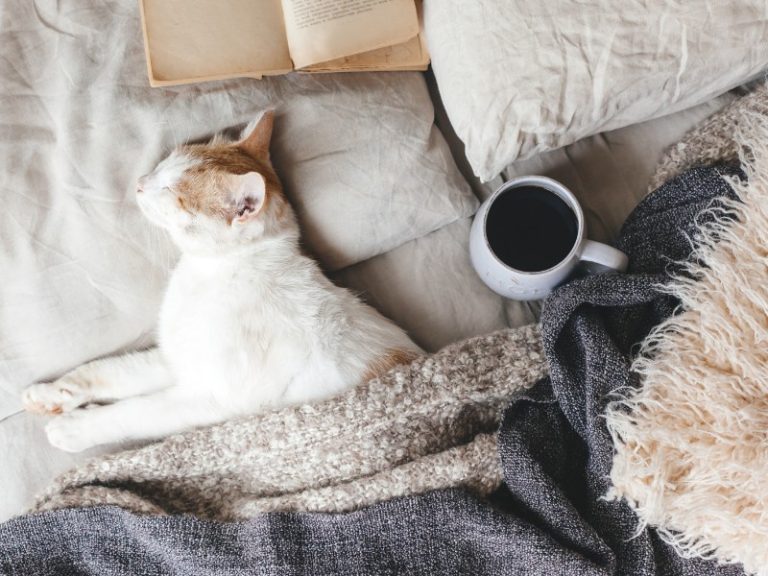
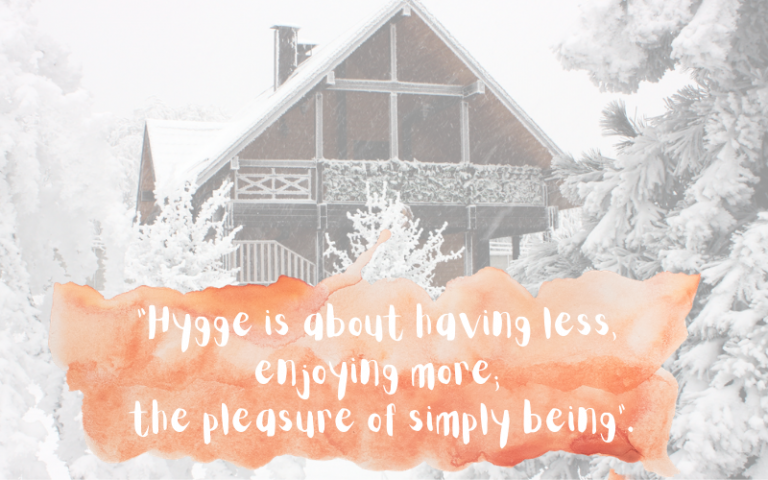
I’m happy I stumbled up your blog. American momma of two here but I think I was Danish in another time because I connect with your culture so deeply. Thank you for what you do.
Thank you for reading, Jessica. I’m glad you feel connected to hygge and this part of Danish culture – it’s good for the soul.
Thank you so much for your blog and sharing about hygge. This is very interesting, and very good for one’s wellbeing. My husband and I are Messianic Gentiles (we follow Judaism and believe Jesus (Yeshua) is the Son of God. Each Friday 18 minutes before sundown we celebrate Erev Shabbat. We light the Shabbat Candles, Bless the Wine or Juice, Wash our Hands and Bless the Challah Bread. Then we have a special meal and sing songs. Sometimes we invite friends as well. On Saturday, we go to synagogue for a service and then we have Oneg (a meal after the service). We come home and have a Shabbat nap and then we read His Word. For us this is Hygge. There is such a sweet rest that comes upon us and we commune with Yeshua. Our focus is on Him and we are rejuvenated for the week. Shabbat ends with the Havdalah Ceremony. When 3 stars appear in the sky, Shabbat closes with the Havdalah Ceremony. Shabbat is a time set apart for us to connect with Adonai (God). Again, thank you for a sweet, helpful and informative blog.
Me gusta el hygge por me tranquiliza de todo el estrés de 36 de laborar en el área contable y con gente tóxica, la mayoría. Espero recibir en mi correo más temas de este modo de vida. Gracias